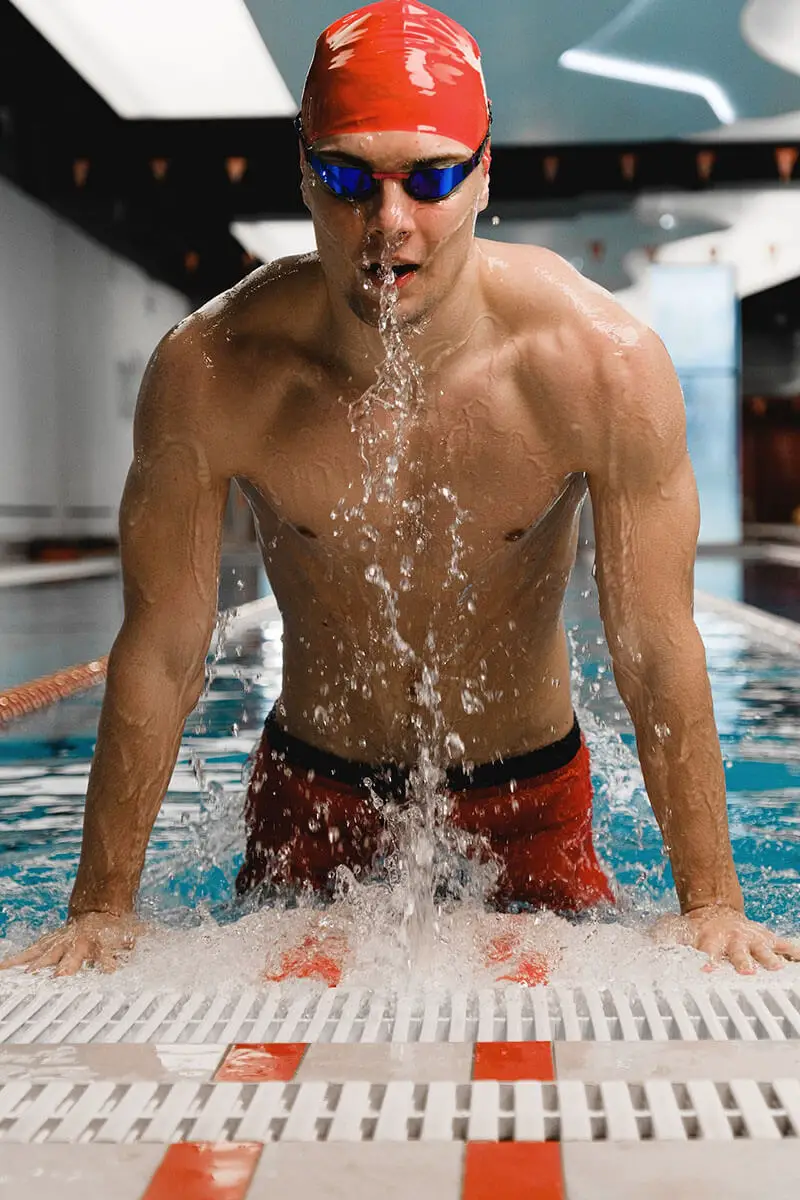Most swimmers have fantastically lean, muscled, “toned” physiques, and therefore it is natural to assume that was the result of their dedicated swim training. With how prominent the arms are used in each swim stroke, many wonder: does swimming tone arms?

Keep reading on as we answer these questions and many more like it with regards to how swimming can improve your arms and the rest of your physique, as well as some common pitfalls that beginners might fall into.
How does swimming tone your arms?
Swimming tones your arms by providing a full body workout that utilizes water resistance. As you perform various strokes, your arms are constantly pushing and pulling against the water. This resistance training stimulates muscle growth and improves muscle tone in your arms, similar to how lifting weights works. Furthermore, swimming is a great cardiovascular exercise that can help you burn calories and fat. The leaner you are, the more the muscle underneath will show.
How long does it take to tone arms with swimming?
The length of time it takes to tone your arms with swimming can vary depending on individual factors such as your current fitness level, body composition, diet, and how frequently and intensely you swim. Generally speaking, noticeable changes in muscle tone can begin to appear after 4 to 6 weeks of regular, consistent swimming workouts. However, for substantial improvements, it may take several months of consistent and varied swimming routines along with dieting.
What swimming strokes are best for toning arms?
Different swimming strokes target different muscle groups in the arms, so a variety of strokes is the most effective way to achieve comprehensive toning. The freestyle stroke, or front crawl, is particularly beneficial for the shoulders and upper back, while the breaststroke and butterfly stroke engage the chest, shoulders, and triceps more intensely. Backstroke also offers a good workout for the shoulders, triceps, and the upper back muscles.
Does swimming tone arms more than weightlifting?
While swimming and weightlifting both tone arms, the water resistance cannot match the resistance of heavy weights. Rather, swimming offers a more balanced, full-body workout that can lead to leaner muscle and better overall body composition. Weightlifting, on the other hand, allows for more targeted, intense workouts which can result in more defined muscular hypertrophy.
How often should I swim to tone my arms?
To effectively tone your arms, it’s recommended to swim at least three to four times a week. Each session should ideally last about 30 minutes to an hour. This regular, consistent exercise will allow your muscles to grow and recover in a way that promotes toning. Remember to include a variety of strokes in your routine to target different arm muscles and avoid overtraining one particular muscle group.
Can swimming alone tone my arms?
Yes, swimming alone can indeed tone your arms. The resistance provided by the water offers a great workout for your arms. Each stroke in swimming engages different arm muscles, leading to improved muscle tone and strength. However, keep in mind that total body fitness and a balanced diet also play critical roles in muscle toning and overall health.
Why do some swimmers have flabby arms?
Some swimmers appear to have flabby arms due to the fact that swimming is a full-body workout and not focused solely on the arms. Also, flabby arms are a sign of high body fat percentage. If the swimmer is not eating a healthy diet, they can still gain fat even if they are regularly swimming. No matter how strong their arm muscles have gotten through swimming, it can be masked by a layer of subcutaneous fat that the body holds onto for buoyancy and energy reserves, giving the arms a softer appearance.
Why aren’t my arms toning up even though I swim regularly?
If your arms aren’t toning up despite regular swimming, it could be due to a variety of factors. It may be that your workouts aren’t intense or varied enough, your diet might not be supporting muscle growth and fat loss, or you might not be giving your body sufficient rest to recover and build muscle between sessions. Other factors could include genetic predispositions, age, and overall health status.
Should I use swimming equipment like paddles or fins to help tone my arms?
Using swimming equipment like paddles can indeed help tone your arms. Paddles increase the resistance your arms have to work against while swimming, much like adding weight in weightlifting, leading to increased muscle strength and tone. However, they should be used with caution to avoid overuse injuries. Start with smaller paddles and gradually increase the size as your strength improves. It’s also important to maintain good form when using paddles to ensure that the increased resistance leads to strength gains rather than injury. Fins, while great for leg strength and improving kick technique, do not directly contribute to arm toning.
Sources:

